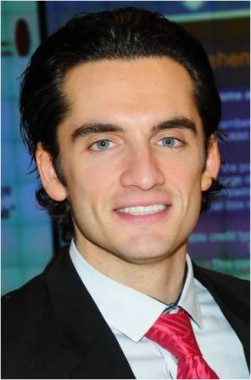User login
NEW YORK – Clinicians, think about how to eliminate – not just reduce – the risk of exposure to bloodborne pathogens in your practice, said Dr. Joseph F. Sobanko of the University of Pennsylvania, Philadelphia.
"Dermatology, with its balance of medical and surgical procedures, is a specialty with unique risks," Dr. Sobanko said in a presentation at the American Academy of Dermatology summer meeting. While the risk of exposure to bloodborne pathogens is broadly shared in health-care delivery, Dr. Sobanko cited data from a recent survey of dermatology residents showing that confirmed rates of inadvertent exposure to patient blood remain high in this population (J. Am. Acad. Dermatol. 2011;65:648-50). Most instances of exposure were needle sticks.
"The majority of those surveyed considered themselves responsible for the exposure," said Dr. Sobanko. The list of safety procedures on how to avoid exposure to bloodborne pathogens is long, and includes never recapping needles and avoiding hand-to-hand transfer of sharps, he said.
However, Dr. Sobanko condensed his "zero-risk" recommendations into three principles: mental preparedness, physical protection, and motor repetition.
The violation of any of the three principles, and especially all three simultaneously, likely explains the evidence that injury risk is highest in individuals with the least training, he said.
One example of mental preparedness is detailed preoperative planning, such as placing the instrument tray in a convenient and neutral spot so that anyone involved in the procedure can access the tools, Dr. Sobanko said. In his own center, the nurses have been supplied with photos of proper setup of the instrument tray for each procedure so that all the tools are always placed in the same spot.
For physical protection, Dr. Sobanko emphasized the importance of using shields and goggles instead of glasses. He cited a study in which shields were tested for blood after asking clinicians if there had been blood splatter. The presence of blood was only correctly predicted 10% of the time. Dr. Sobanko also cited data supporting the safety of double-gloving. Although he acknowledged that some clinicians report reduced dexterity, he said that this relative disadvantage can probably be overcome with practice.
Performing the procedure repeatedly provides its own protection, according to Dr. Sobanko, who cited data of an inverse relationship between risk of exposure to a bloodborne pathogen and experience. These data suggests the need for greatly increased vigilance during procedures with which one is less familiar, he said.
Creating a culture of safety is also important, with emphasis on safety over speed. In the survey of dermatology residents, the sense of feeling rushed was identified as an important factor in needle stick injuries, Dr. Sobanko said.
Dr. Sobanko, who is preparing an atlas of procedural safety in dermatology with Dr. Jacob Levitt of Mount Sinai School of Medicine, N.Y., added that this culture shift to an emphasis on safety falls under his category of mental preparedness.
When asked for additional perspective on safety, Dr. William K. Andersen, a dermatologist in private practice in Lancaster, Penn., agreed with Dr. Sobanko’s points, but he suggested that it is not enough to post a list of safety procedures. All health-care personnel involved in a given procedure must function together.
"Everybody has to be on board even when you have the protocols in place," Dr. Anderson noted. When everyone is cooperating, there is less risk in the face of unexpected events, he said.
Dr. Sobanko had no relevant financial conflicts to disclose.
NEW YORK – Clinicians, think about how to eliminate – not just reduce – the risk of exposure to bloodborne pathogens in your practice, said Dr. Joseph F. Sobanko of the University of Pennsylvania, Philadelphia.
"Dermatology, with its balance of medical and surgical procedures, is a specialty with unique risks," Dr. Sobanko said in a presentation at the American Academy of Dermatology summer meeting. While the risk of exposure to bloodborne pathogens is broadly shared in health-care delivery, Dr. Sobanko cited data from a recent survey of dermatology residents showing that confirmed rates of inadvertent exposure to patient blood remain high in this population (J. Am. Acad. Dermatol. 2011;65:648-50). Most instances of exposure were needle sticks.
"The majority of those surveyed considered themselves responsible for the exposure," said Dr. Sobanko. The list of safety procedures on how to avoid exposure to bloodborne pathogens is long, and includes never recapping needles and avoiding hand-to-hand transfer of sharps, he said.
However, Dr. Sobanko condensed his "zero-risk" recommendations into three principles: mental preparedness, physical protection, and motor repetition.
The violation of any of the three principles, and especially all three simultaneously, likely explains the evidence that injury risk is highest in individuals with the least training, he said.
One example of mental preparedness is detailed preoperative planning, such as placing the instrument tray in a convenient and neutral spot so that anyone involved in the procedure can access the tools, Dr. Sobanko said. In his own center, the nurses have been supplied with photos of proper setup of the instrument tray for each procedure so that all the tools are always placed in the same spot.
For physical protection, Dr. Sobanko emphasized the importance of using shields and goggles instead of glasses. He cited a study in which shields were tested for blood after asking clinicians if there had been blood splatter. The presence of blood was only correctly predicted 10% of the time. Dr. Sobanko also cited data supporting the safety of double-gloving. Although he acknowledged that some clinicians report reduced dexterity, he said that this relative disadvantage can probably be overcome with practice.
Performing the procedure repeatedly provides its own protection, according to Dr. Sobanko, who cited data of an inverse relationship between risk of exposure to a bloodborne pathogen and experience. These data suggests the need for greatly increased vigilance during procedures with which one is less familiar, he said.
Creating a culture of safety is also important, with emphasis on safety over speed. In the survey of dermatology residents, the sense of feeling rushed was identified as an important factor in needle stick injuries, Dr. Sobanko said.
Dr. Sobanko, who is preparing an atlas of procedural safety in dermatology with Dr. Jacob Levitt of Mount Sinai School of Medicine, N.Y., added that this culture shift to an emphasis on safety falls under his category of mental preparedness.
When asked for additional perspective on safety, Dr. William K. Andersen, a dermatologist in private practice in Lancaster, Penn., agreed with Dr. Sobanko’s points, but he suggested that it is not enough to post a list of safety procedures. All health-care personnel involved in a given procedure must function together.
"Everybody has to be on board even when you have the protocols in place," Dr. Anderson noted. When everyone is cooperating, there is less risk in the face of unexpected events, he said.
Dr. Sobanko had no relevant financial conflicts to disclose.
NEW YORK – Clinicians, think about how to eliminate – not just reduce – the risk of exposure to bloodborne pathogens in your practice, said Dr. Joseph F. Sobanko of the University of Pennsylvania, Philadelphia.
"Dermatology, with its balance of medical and surgical procedures, is a specialty with unique risks," Dr. Sobanko said in a presentation at the American Academy of Dermatology summer meeting. While the risk of exposure to bloodborne pathogens is broadly shared in health-care delivery, Dr. Sobanko cited data from a recent survey of dermatology residents showing that confirmed rates of inadvertent exposure to patient blood remain high in this population (J. Am. Acad. Dermatol. 2011;65:648-50). Most instances of exposure were needle sticks.
"The majority of those surveyed considered themselves responsible for the exposure," said Dr. Sobanko. The list of safety procedures on how to avoid exposure to bloodborne pathogens is long, and includes never recapping needles and avoiding hand-to-hand transfer of sharps, he said.
However, Dr. Sobanko condensed his "zero-risk" recommendations into three principles: mental preparedness, physical protection, and motor repetition.
The violation of any of the three principles, and especially all three simultaneously, likely explains the evidence that injury risk is highest in individuals with the least training, he said.
One example of mental preparedness is detailed preoperative planning, such as placing the instrument tray in a convenient and neutral spot so that anyone involved in the procedure can access the tools, Dr. Sobanko said. In his own center, the nurses have been supplied with photos of proper setup of the instrument tray for each procedure so that all the tools are always placed in the same spot.
For physical protection, Dr. Sobanko emphasized the importance of using shields and goggles instead of glasses. He cited a study in which shields were tested for blood after asking clinicians if there had been blood splatter. The presence of blood was only correctly predicted 10% of the time. Dr. Sobanko also cited data supporting the safety of double-gloving. Although he acknowledged that some clinicians report reduced dexterity, he said that this relative disadvantage can probably be overcome with practice.
Performing the procedure repeatedly provides its own protection, according to Dr. Sobanko, who cited data of an inverse relationship between risk of exposure to a bloodborne pathogen and experience. These data suggests the need for greatly increased vigilance during procedures with which one is less familiar, he said.
Creating a culture of safety is also important, with emphasis on safety over speed. In the survey of dermatology residents, the sense of feeling rushed was identified as an important factor in needle stick injuries, Dr. Sobanko said.
Dr. Sobanko, who is preparing an atlas of procedural safety in dermatology with Dr. Jacob Levitt of Mount Sinai School of Medicine, N.Y., added that this culture shift to an emphasis on safety falls under his category of mental preparedness.
When asked for additional perspective on safety, Dr. William K. Andersen, a dermatologist in private practice in Lancaster, Penn., agreed with Dr. Sobanko’s points, but he suggested that it is not enough to post a list of safety procedures. All health-care personnel involved in a given procedure must function together.
"Everybody has to be on board even when you have the protocols in place," Dr. Anderson noted. When everyone is cooperating, there is less risk in the face of unexpected events, he said.
Dr. Sobanko had no relevant financial conflicts to disclose.
EXPERT ANALYSIS FROM THE AAD SUMMER ACADEMY 2013

